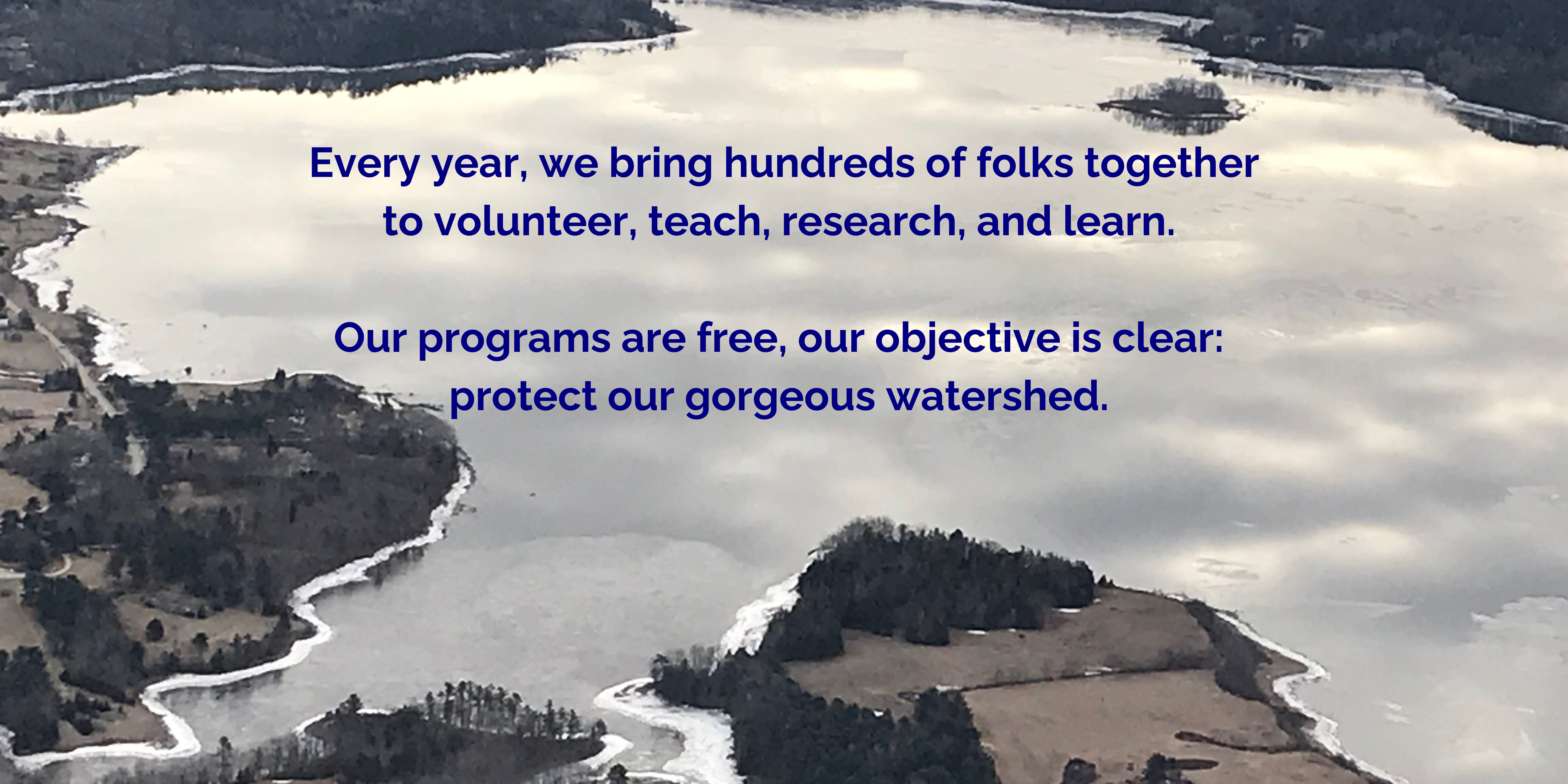Bird Census

Breeding Birds of the Belfast Bay Watershed
Beginning in the spring/summer season of 2012 and continuing through the spring/summer season of 2017 a group of experienced birders combed the Belfast Bay watershed (drainages of the Passagassawakeag River, Little River, Goose River, and Wescot Stream) looking for possible nesting birds. For each species found it was classified as a confirmed nester, probable nester, possible nester, or only observed. The terms confirmed, probable, possible, and observed are described in detail below. The results were that a total of 115 species were found, of which 77 were confirmed as nesters, 20 were probable nesters, 17 were possible nesters, and only 1 species fell into the observed category.
The primary birders were Ron Harrell, Gary Gulezian, Tom Aversa, Dick DeGraaf, and Dave Potter. There were also many other people (too numerous to list here) who contributed valuable information by either helping to list species found in the watershed or by letting us know of nesting birds near or on their properties, and we would like to thank these people for their help.
Confirmed Nesting Species
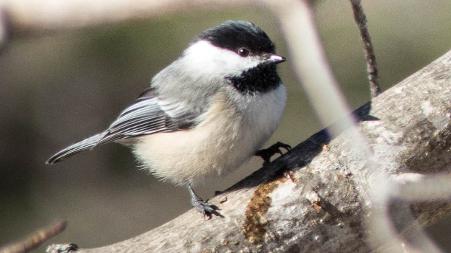
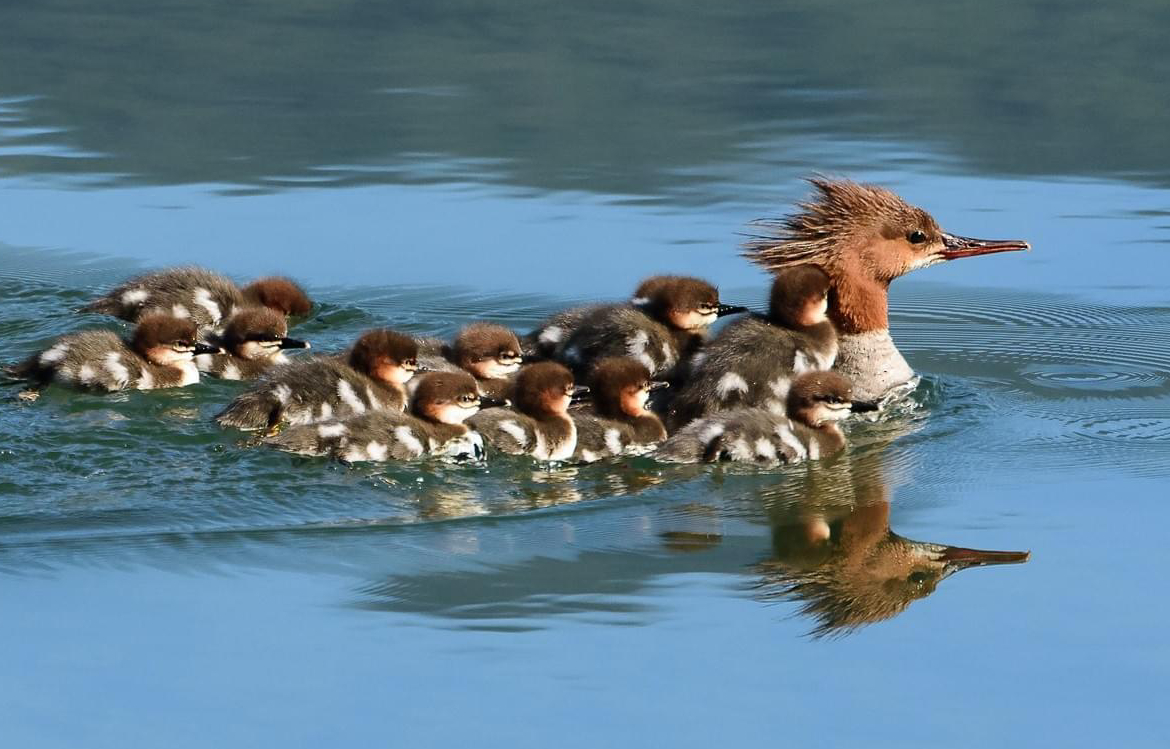
A species is designated “Confirmed”, if anyone of the following criteria are met (in this project all criteria are taken from those used by the Massachusetts Audubon Society in completing its statewide breeding bird atlas).
ON: occupied nest; CN: Carrying nest material (do not use for wrens, crows, colonial species); NB: Nest building at nest site (do not use for wrens); DD: Distraction display or injury feigning; UN: Used nest or eggshells found (identify carefully); PY: Precocialyoung: can walk but not fly; FL: Recently fledged young incapable of sustained flight; CF: Adults seen carrying food for young (use carefully for crows, ravens, raptors, gulls, or terns); FY: Adults feeding recently fledged young; FS: Adults seen carrying fecal sac; NE: nest with eggs; NY: Nest with young seen or heard.
The following list contains birds that are designated “Confirmed”for the watershed area.
Common Loon: Common nester around inland lakes and ponds. Nonbreeding birds are often found on Belfast Bay and Belfast Harbor at any time of year.
Double-crested Cormorant:Common bird along the PassagassawakeagRiver (esp. the Upper Bridge area), Belfast Harbor, andBelfast Bay. Up to 10 pairs nest on the monument in Belfast Bay.
Canada Goose: In summer often seen around farm ponds and other isolated ponds.
Wood Duck:Found atwooded streams, ponds, and lakes, where it nests in provided nest boxes or a hollow tree.
American Black Duck:Uncommon nester in the area, but can be found on streams, lakes and ponds most any time of year, except when water is completely frozen.
Mallard:Nests near any pond, lake, or stream.
Hooded Merganser:Found atwooded streams and ponds where it nests in a provided nest box or a hollow tree.
Common Merganser: Uncommon during the summer and is most often found along large streams and the Belfast Bay shore. It has been found nesting in bothkinds ofplaces.
Osprey: In summer this bird is a common sight in Belfast Harbor and nearby locales. In this region it is partial to nesting along powerline cuts, where it builds it large nest atop utility poles.
Bald Eagle: A regular sight along the Passagassawakeag River, as well as in many inland areas. About four pairs nest in our watershed area.
Northern Harrier: An uncommon summer resident found near large open fields and marshes. It builds its nest on the ground.
Red-shouldered Hawk: An uncommon summer resident that favors wet, to even swampy, woods for nesting, as long as there are nearby fields available for hunting.
Red-tailed Hawk: An uncommon summer resident that prefers deciduous or mixed deciduous/coniferous woods for nesting as long as there are nearbyopen areas for hunting.
American Kestrel: An uncommon summer resident that is most often found along roads adjacent to open areas with some nearby woods to provide nest trees.
Ruffed Grouse: Common bird of deep woods, where the female often hides her nest at the foot of a large tree.
Wild Turkey: Common resident of areas that provide a mix of woods and open areas.
Killdeer: An uncommon summer resident found mostly in the vicinity of farms, where it nests on the ground in open areas.
Spotted Sandpiper: Uncommon along the shores of area streams, ponds, and lakes.
Rock Dove:Common: Nests on building ledges and other kinds of nooks.
Mourning Dove: Common Generally nests in small trees of all kinds.
Barred Owl: Commonin any extensive dense wet woods. Places its nest in the fork of a tall tree.
Belted Kingfisher: Common along streams and rivers, edges of ponds and lakes, and the shore of Belfast Bay. Nests in a burrow, which the pair digs into a bank and which is usually adjacent to a body of water (but not always).
Yellow-bellied Sapsucker: Common in wooded areas. Its presence is revealed by neat rows of holes that the birds drill into the bark of trees.
Hairy Woodpecker: Common in wooded areas.
Northern Flicker: Common in wooded areas.
Pileated Woodpecker: Common in wooded areas. Its presence is revealed by squarish holes chipped out of the bark and wood of trees.
Alder Flycatcher: Common along streams and in swampy areas.
Least Flycatcher: Common and found mainly in deciduous forests.
Eastern Phoebe: Common around houses, sheds, and other outbuildings. Nests under the eaves of such places.
Eastern Kingbird: Uncommon in open areas with scattered bushes and trees.
Tree Swallow: Common in open areas where it utilizes bluebird boxes for nesting.
Bank Swallow: Uncommon and found in colonies during the summer near gravel pits where members of a colony dig nest holes into a bank.
Cliff Swallow: Generally uncommon and colonies of the species nest under bridges. The US 1 bridge over the Passagassawakeag River has had a nesting colony for years.
Barn Swallow: Common in most open areas. Colonies nest in farm buildings, where their round mud nests are placed under the eaves,both inside and outside buildings.
Blue Jay: Common throughout our area. Generally, nests in a small evergreen, building a bulky nest next to the trunk.They are very quiet and secretive during the nesting season.
American Crow: Common throughout our area. Generally, builds its nest in a high fork of a tree.
Common Raven: Common in our area, except along the coast. Builds its nest in a high fork of a tree or on a high rock ledge.
Black-capped Chickadee: Common in our area. Its nest is a nest hole excavated most often in the trunk of a small dead tree stub.
Tufted Titmouse: Common in tall deciduous woods. Its nest is placed in a tree cavity often high up in the tree.
White-breasted Nuthatch: Common in our area in deciduous woods, but its population seems to vary from one season to the next. Nest is located in a tree cavity or even a nest box.
Brown Creeper: May be common in dense coniferous or mixed forests, but difficult to find. Builds its nest behind a loose piece of bark on a tree.
Winter Wren: Common in dense forests of coniferous or a mix of coniferous and deciduous trees, where it feeds mostly at low levels. Easily detectedfrom its song, but difficult to actually see.Nest is built in some sort of cavitynear the ground and well-hidden.
Marsh Wren: May be common in extensive tall grasses and cattails along streams or edges of ponds and lakes. In our area it has a population along the Goose River.
Eastern Bluebird: Common in open areas, pastures, and farms. Readily uses nest boxes put out for that purpose.
Veery: Common in wet deciduous forests with understory. Builds its nest in a shrub, often close to the ground.
Hermit Thrush: Common in coniferous or mixed coniferous and deciduous forests. Builds its nest on the ground or low down in a shrub or small tree.Famous for its beautiful song, which is a characteristic woodland bird song in our area.
American Robin: Common and easily found in a variety of habitats.
Gray Catbird: Prefers shrubby growth often with scattered trees. Builds its nest in a dense shrub usually within 10 feet of the ground.
Cedar Waxwing: Found in a variety of woodland habitats, as well as open areas with scattered trees. Builds its nest, usuallyin a conifer, anywhere from 5 to 50 feet from the ground.
European Starling: Common throughout our area. Builds its nest in tree cavities, squirrel holes, and holes in buildings.
Blue-headed Vireo: Common summer resident of mixed deciduous and coniferous forests, where its nestissuspended from afork of a coniferous tree.
Red-eyed Vireo: Common summer resident, whose song is often the most heard songin deciduous or mixed deciduous/coniferous woods. Suspends its nest from a fork of a deciduous tree.
Chestnut-sided Warbler: One of our most common summer warblers, it is found at the edges of woods, in brushy areas, and secondary growth woods.
Magnolia Warbler: Uncommon summer resident of open coniferous (fir, spruce, hemlock) woods, although during migration it can be common in many places.
Black-throated Blue Warbler: Common summer resident in deciduous or mixed deciduous/coniferous woods with lots of undergrowth in which to build its nest.
Yellow-rumped Warbler: Common summer resident in coniferous woods.
Black-throated Green Warbler: Common summer resident in coniferous or mixed deciduous/coniferous woods.
Pine Warbler: Common summer resident in woods having mature white pines.
Black and White Warbler: Common summer resident in deciduous, coniferous, or mixed deciduous/coniferous woods. Builds its nest near or on the ground under a small bush.
American Redstart: Uncommon to common resident in a variety of woods containing lots of small trees, where it often builds its nest in the forkof a small birch, alder, maple, etc.
Ovenbird: One of the most common woodland birds in our region. Its call cannot be missed, but the bird itself can be hard to find. Its nest, located on the ground and well-hidden, resembles a dutch oven, hence the bird’s name.
Northern Waterthrush: Uncommon summer resident of wet woods and swamps. This is a difficult bird to locate (using its calls) and harder yet to actually see.
Common Yellowthroat: Common throughout our region in open shrubby habitats and wood edges.
Canada Warbler: Uncommon to rare summer resident of wet woodlands containing bogs and swamps.
Northern Cardinal: Common bird of residential areas and dense shrubby fields and wood edges. Builds its nest in dense shrubs.
Rose-breasted Grosbeak: Common summer resident of deciduous or mixed deciduous/coniferous forests. Usually builds its nest in a small tree or large shrub.
Chipping Sparrow: Common summer resident of residential areas and other open habitats containing scattered conifers where it builds its nests.
Savannah Sparrow: Uncommon summer resident in dry fields and pastures in which it builds its nest.
Song Sparrow: Common summer resident in residential areas and other open areas with shrubbery and low trees. Its nest can be found in a shrub, a small tree, or on the ground, always well-hidden.
Swamp Sparrow: Common summer residentaround smallpondswith plenty of emergent vegetation, especially cat tails. Nest is often built above water at the base of a clump of grass, shrub, or cattails.
White-throated Sparrow: Common summer resident of coniferous or mixed coniferous/deciduous woods and at edges or open areas near such woods. Nest is built near the ground.
Bobolink: Common summer resident in large open fields covered by grass like vegetation where it builds its nest. Generally, a field containing one pair of birds will contain an entire colony of this species.
Red-winged Blackbird: Common summer resident around bodies of water with emergent vegetation and in wet fields. Nest is located low in a clump of vegetation, such as grass or cattails.
Common Grackle: Common summer resident throughout our region in open areas with shrubs and small trees or around bodies of water. Nest can be located in a bush, small tree, tree cavity, or in emergent vegetation.
House Finch: Common year round resident of residential areas. Often builds nests in a small coniferous tree, but also uses nooks and ledges of buildings.
Probable Nesting Species
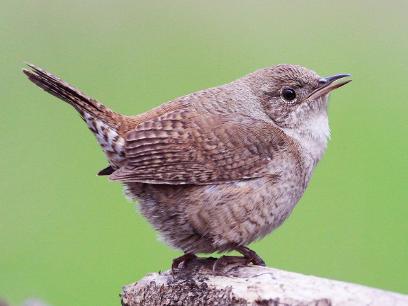
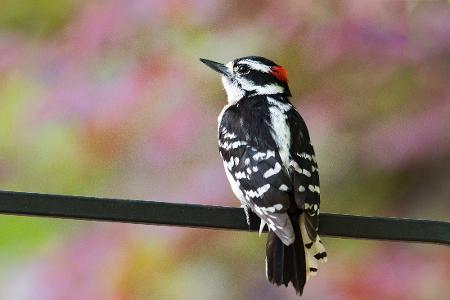
The following list contains the birds designated as “Probable” for the Belfast Bay watershed. A species is designated “Probable”, if the time of sighting is within the safe dates and any of the following criteria are met.
P: A pair (male and female) is seen in suitable habitat and is acting like a mated pair; S: A singing male is heard at the same location on two occasions at least seven days apart; T: A permanent territory has been established by the pair; A: Agitated behavior or anxiety calls be an adult; C: Courtship and/or reproductive behavior is seen; N: Visiting a probable nest site.
American Bittern: Uncommon summer resident found in grassy wet fields and around the edges of ponds and lakes.
Turkey Vulture:Common summer resident often seen soaring overhead in small groups.
Common Snipe: Uncommon summer resident found in wet grassy fields or wet second growth deciduous woods.
Chimney Swift: Uncommon summer resident in the Belfast area, sporadically seen in small flocks flying over the city. Pairs can be seen at the chimney of the Crosby School on Church Street.
Downy Woodpecker: Common summer resident, found in a variety of habitats from mature forests of all kinds to open areas with scattered trees.
Eastern Wood Pewee: Uncommon summer resident of deciduous forests and mixed deciduous/coniferous forests.
Red-breasted Nuthatch: Common summer resident of coniferous and mixed coniferous/deciduous forests.
House Wren: Uncommon summer resident. Most often seen near houses and farm buildings, but can also be found in open woodland and shrubby areas.
Northern Parula: Common summer resident of coniferous and mixed coniferous/deciduous forests, especially those forests with abundant old man’s beard moss (its favorite nesting material).
Cooper’s Hawk:Uncommon summer resident found mostly in deciduous or mixed deciduous/coniferous forests.
Yellow Warbler: Uncommon summer resident found in woodlands near bodies of water or other wet shrubby habitats.
Blackburnian Warbler: Uncommon summer resident found in woods that contain mature stands of coniferous trees, especially hemlock trees in our area.
Prairie Warbler: Uncommon summer resident found in our area along power line cuts, and then only sporadically.
Palm Warbler: Uncommon summer resident found in wet areas with sphagnum moss and scattered spruce.
Scarlet Tanager: Common summer resident found in deciduous or mixed deciduous/coniferous forests.
Indigo Bunting: Common summer resident found along roads bordered by open areas with scattered trees and shrubby growth.
Eastern Towhee: Uncommon summer resident found in dry shrubby habitats
Brown-headed Cowbird: Uncommon summer resident found in a wide variety of forested and open habitats. Most often seen during summer in small flocks consisting of a single female and consort of males.
Baltimore Oriole: Uncommon summer resident found in open wooded areas, such as orchards and parks.
Northern Goshawk:Uncommon year round resident of coniferous and mixed coniferous/deciduous forests
Possible Nesting Species
A species is designated “Possible” if a male or female is observed in habitat appropriate to the species within the safe dates, but with no other evidence of breeding. The following species have been designated as “Possible” for the Belfast Bay watershed.
Great Blue Heron:Commonly seen in our area during summer, but no nesting colony was found. Look for colonies in heavily forested areas away from people.
Green Heron: Uncommon summer resident found along shores of rivers, ponds, lakes, and in swamp.
Common Goldeneye: Uncommon to rare summer resident found mainly on rivers.
Broad-winged Hawk: Common summer resident found in deciduous forests and mixed deciduous/coniferous forests.
Merlin: Uncommon summer resident found in open habitats.
Virginia Rail: This species can be very secretive, and it is hard to say if it is common or uncommon. Look for it in ponds with lots of grassy and/or reedy vegetation.
Sora: What was written in the preceding comments for the Virginia Rail also applies to the Sora.

Black-billed Cuckoo: Uncommon summer resident of deciduous or mixed forests, as well as open habitats containing a mix of small trees and shrubby growth.
Common Nighthawk: Uncommon summer resident, usually seen flying high over towns. In other areas it often nests on a flat-roofed building, as well as its traditional nesting spot on a horizontal tree branch.
Carolina Wren: Uncommon summer resident, but one that can be found most any time of year. It is most often found in residential areas.
Wood Thrush: Uncommon summer resident found in deciduous or mixed deciduous/coniferous forests.
Warbling Vireo: Uncommon summer resident found in open areas with isolated clumps of trees, where it prefers to build its nests.
Nashville Warbler: Common summer resident found in deciduous or mixed forests, often those found in wet areas.
Dark-eyed Junco: Uncommon summer resident found in coniferous or mixed coniferous/deciduous forests, where it builds its nest on the ground often into a bank.
White-winged Crossbill: Uncommon summer resident/visitor found mainly in coniferous forests.
Observed Bird
A species is listed in this category if it was seen passing through or feeding, but not exhibiting any breeding behavior.
Herring Gull: Many are seen flying over our area, but none have been known to nest, nor did we see any nesting evidence. In Maine Herring Gulls nest on the outer islands along the coast, and there are known to be at least 180 such islands where this species nests.

Bird Species recorded for the Belfast Bay Area for winters 2012-2017
The study was done primarily by Ron Harrell and Gary Gulezian. During the months September through April for years 2012-2017, they censused the entire bay area from the mouth of the Little River to the former RR Bridge across the Passagassawakeag River near the latter’s head of tide. The census was done twice each month, once in the first half of the month and once in the second half. The primary purpose was to determine which bird species made use of the area during the fall, winter, and early spring months. The results were that 60 species plus two hybrids were found. The following summarizes what was learned about each of these species.
Red-throated Loon: generally present Nov.-Feb. and most often seen in the bay outside harbor.
Common Loon: present all year from the Upper Bridge area to the bay.
Pied-billed Grebe: rare in winter in the harbor area.
Horned Grebe: generally present from Oct.-Apr.mostly in the bay.
Red-necked Grebe: generally present from Nov.- Mar. mostly in the bay.
Double-crested Cormorant: present in Sept., Oct., and Apr.in all areas.
Great Blue Heron: Sept.-Nov. and Apr. in various places, but during the fall mostly in the harbor area.
Yellow-crowned Night Heron: rare; one seen at the RR Bridge along the Rail Trail on Sept. 4, 2016.
Canada Goose: not common, but possible at any time Sept.-Apr.
Wood Duck: uncommon fall migrant; most often seen in the RR Bridge area along the Rail Trail.
Green-winged Teal: fall and spring migrant; found mostly in the RR Bridge area or at mouth of Little R.
American Black Duck: occurs Sept.-Apr. and in all areas.
MallardxBlack Duck: seen three times in a flock of Mallards.
Mallard: occurs Sept.-Apr. and is abundant Jan.-Mar.
Northern Pintail: Occasional winter visitor between the Upper Bridge and Rt 1 Bridge.
Gadwall: Occasional fall migrant at mouth of Little R.
American Widgeon: Occasional fall migrant at mouth of Little R.
Ring-necked Duck: Rare fall visitor at mouth of Little R.
Greater Scaup: Rare (seen only once) fall migrant between the Upper Bridge and Rt 1 Bridge.
Common Eider: Year round resident most common in late winter and spring in the bay.
Long-tailed Duck: Common winter resident found mostly in the bay.
Black Scoter: Winter visitor in the bay.
Surf Scoter: Regular winter visitor in the bay.
White-winged Scoter: Occasional winter visitor at mouth of Little R.
Common Goldeneye: Common winter resident found from Upper Bridge to the bay.
Barrow’s Goldeneye: Declining winter visitor, not seen during winters 2015-16 and 2016-17. Found in the harbor area.
CommonxBarrow’s Goldeneye: seen once near the Footbridge.
Bufflehead: Common winter resident in all areas.
Hooded Merganser: Regular fall migrant mostly in the RR Bridge area.
Common Merganser: Appears sporadically Sept. – Apr., mostly in the Upper Bridge area.
Red-breasted Merganser: Appears sporadically Nov. – Apr. and may be found in all areas.
Ruddy Duck: Rare; seen once at City Park.
Sharp-shinned Hawk: occasionally seen during migration hunting along the shore.
Cooper’s Hawk: present year round and occasionally seen hunting along the shore.
Osprey: present only in Sept. and Apr. in small numbers.
Bald Eagle: year round resident and can be found in all areas.
Peregrine Falcon: uncommon visitor Sept. – Apr. and is most often seen perched on the water pipe beneath the Rt1 Bridge.
Wild Turkey: year round resident and occasionally seen feeding along the shore from the RR Bridge into the harbor area.
Black-bellied Plover: rarely seen migrant.
Greater Yellowlegs: uncommon migrant to the harbor area Sept.-Oct.
Lesser Yellowlegs: uncommon migrant to the harbor area Sept.-Oct.
Solitary Sandpiper: uncommon migrant to the harbor area Sept.-Oct.
Red-necked Phalarope: seen once at the RR Bridge area.
Laughing Gull: present in Sept. in small numbers on the bay.
Little Gull: rare visitor in Mar. and Apr. at mouth of Little R.
Bonaparte’s Gull: common visitor to the bay in fall and spring.
Ring-billed Gull: resident Sept.- Apr. in small numbers.
Herring Gull: abundant resident Sept.-Apr.
Iceland Gull: occasional winter visitor, appearing mostly in the harbor area, and with individuals being almost always immatures.
Lesser Black-backed Gull: Occasional winter and spring visitor, appearing at mouth of Little R. and the harbor area.
Glaucous Gull: occasional winter visitor, appearing mostly in the harbor area, and with individuals being almost always immature.
Common Tern: occasionally seen in Sept.
Black Guillemot: can be seen mostly in fall and spring months and always in small numbers
Mourning Dove: seen feeding along the shore at RR Bridge.
Rock Pigeon: seen feeding along the shore in harbor area and city park.
Belted Kingfisher: seen mostly in fall and spring months along any shore.
American Crow: common year round resident and can be found along any shore.
Red-winged Blackbird: occasionally seen in Apr. feeding along shores from the RR Bridge to the harbor area.
Common Grackle: occasionally seen in Apr. feeding along shores from the RR Bridge to the harbor area.
